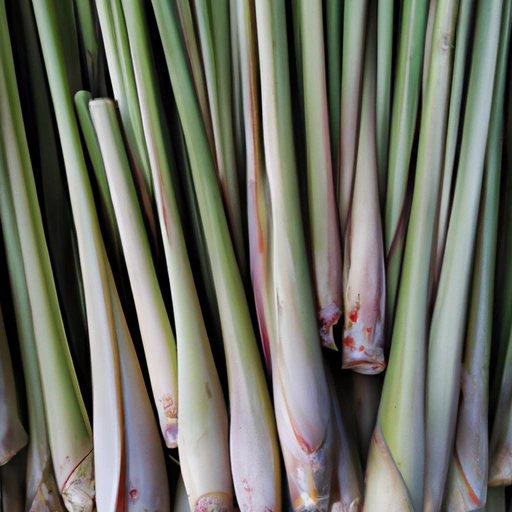Lemongrass
Description

Lemongrass is an herb that is native to Sri Lanka and South India but now grows in many countries around the world. With its fresh, lemony aroma and a subtle hint of ginger, lemongrass is a prized ingredient in many culinary traditions. Its long, pale green stalks are tough and fibrous, making the outer layers unsuitable for consumption; however, the inner core is soft, pliable, and used in cooking. In its powdered form, lemongrass is a versatile seasoning. It's used to impart a citrusy flavor to dishes without the tartness of lemon juice.
Common uses
Lemongrass is often used in teas, soups, curries, and stir-fries. It's a common ingredient in many Southeast Asian dishes, including those from Thailand, Vietnam, and Indonesia. Due to its high citral content, lemongrass is also used as a natural pesticide and preservative.
Nutritional value
Calories
One tablespoon (6 grams) of fresh, chopped lemongrass contains approximately 5 calories.
Protein
Lemongrass offers about 0.1 grams of protein per tablespoon.
Fat
This herb is low in fat, providing less than 0.1 grams per tablespoon.
Carbohydrates
Lemongrass contains about 1.2 grams of carbohydrates per tablespoon.
Vitamins
It is a source of vitamins A and C, essential for immune function and vision.
Minerals
Lemongrass includes trace amounts of potassium and magnesium, which are vital for heart health and muscle function.
Health benefits
Traditionally, lemongrass has been associated with a variety of health benefits, including anti-inflammatory and antifungal properties. It is also thought to help with digestion and to have calming effects that can reduce stress and insomnia.
Potential risks
When used as a food ingredient, lemongrass is generally safe for most people. However, it should be used with caution by those who are pregnant or breastfeeding, and by those with liver or kidney disease. Excessive consumption can lead to allergic reactions or gastrointestinal discomfort.
Common recipes
Lemongrass is commonly found in recipes for Thai curry paste, Vietnamese pho, and Indonesian sambal. It's also used to flavor beverages like lemongrass tea and cocktails.
Cooking methods
The tender inner stalks of lemongrass can be finely chopped and added to dishes. The tougher outer layers are often bruised to release their flavor and then removed before serving. Lemongrass can also be dried and ground into a powder or used as a whole stalk to infuse broths and soups.
Pairing with other ingredients
Lemongrass pairs well with ingredients such as coconut milk, garlic, ginger, and chili peppers. It complements poultry, seafood, and tofu particularly well.
Summary
Lemongrass is a fragrant culinary herb with a lemony taste and a hint of ginger. It's widely used in Southeast Asian cuisine and offers a variety of health benefits. While generally safe to consume, it should be used in moderation and with caution by certain individuals. Lemongrass can be used in a multitude of recipes, from aromatic teas and soups to flavorful curries and stir-fries.